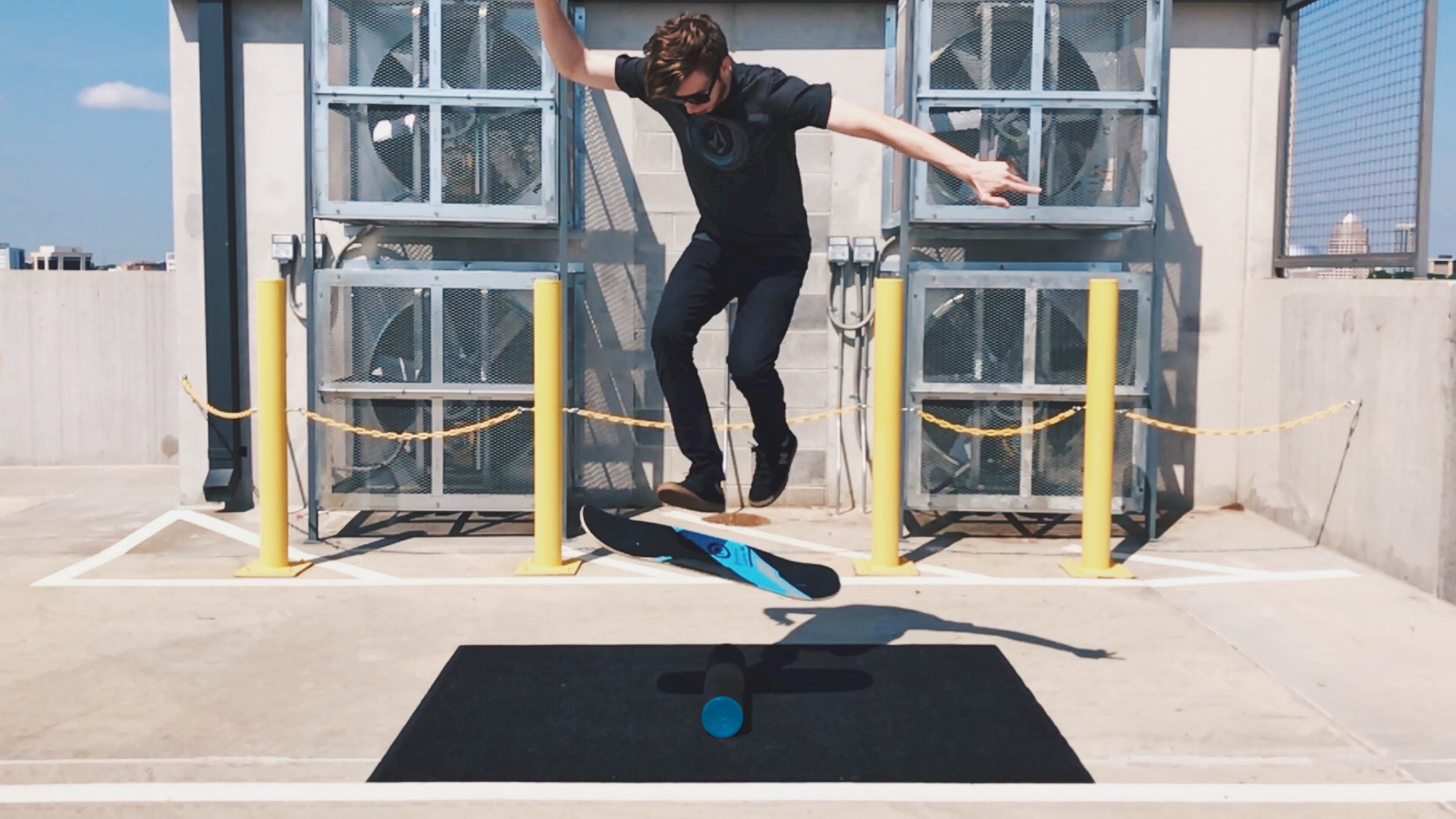

We may earn revenue from the products available on this page and participate in affiliate programs. Learn more ›
The pandemic has forced countless people to reevaluate how they exercise. And since so many have shifted to working from home or been laid off, the normal activity they may have received from, say, walking to a nearby subway station has vanished—not to mention the fact that you can’t go to the gym if it’s closed.
Options remain, of course—from going for a run, taking a walk, or even trying out jump rope, an exercise that will have your pulse quickly pounding. But for me, the most exciting activity I’ve tried out is a precarious, thrilling contraption that anyone should use at their own risk. It’s a balance board: one that mimics the movements involved with skateboarding by giving its user a long plank that rests atop a heavy cylinder.
At 31.5 inches long, the board (a Revolution Core 32) is the same length as a regular skateboard, and just a little wider. But it’s much more difficult to stand on than a traditional at-rest skateboard, because unlike its four-wheeled outdoor cousin, it is designed to balance on top of that single roller. That makes it something like the OneWheel Pint, an electric outdoor skateboard that cruises on just one tire. Only in the balance board’s case, there are no gyros or accelerometers to measure your motion and tell a motorized wheel how to keep you upright, which is how the Pint works.
To begin using it, I rest the board across the roller so one end is touching the floor and the other is sticking up in the air, like a seesaw. With my right foot on the end on the ground, I carefully press my left foot down onto the upper end—and with enough practice and the right amount of pressure, the board will move to the horizontal and balance atop that roller, both ends in the air and both my feet off the ground. From there, the way to stay perched on the cylinder is with a side-to-side rocking motion. And presto: I’m surfing in my apartment, trying not to bite it. So far, I’ve only lost it once on this unstable device—the board shot out to one side, and I ended up on the floor, on my knees. Since then, I’ve bought some foam padding and set up a balance-board zone in a hallway.
I keep using the board from time to time because I can feel it working my leg muscles, helping my balance, and the feeling of rocking back and forth atop that rolling cylinder for minutes on end—with short rests with one end of the board laid back down on the floor—is thrilling. (I have not attempted any of the tricks I’ve seen in videos.) This particular board is designed to simulate being on a skateboard outside, but that almost doesn’t matter: it’s a fun indoor endeavor, and trying something hard is the route to growth. “The only way to improve your balance is [to] challenge it,” says Jennifer L. Vincenzo, an associate professor of physical therapy at the University of Arkansas for Medical Sciences.
And I’ve noticed that just staying upright on the board requires a multitude of tiny muscular tweaks. “The more unstable the surface—or even the more unstable the person—the more our muscles are sending these tiny contractions to try to keep us upright against gravity,” Vincenzo adds.
For me, the challenge of staying perched on this indoor skateboard is reminiscent of balance boards I’ve used in physical therapy, where I’ve spent plenty of time following a hip replacement and two hip surgeries before that. These contraptions vary: from the skateboard simulator I’ve been using, to those that tilt side to side or front-and-back, to others that wobble around a central point.
Vincenzo notes that people need to discover a “happy medium” between being safe and challenging themselves, and adds that anyone who is uncertain if this exercise is appropriate for them should ask a physical therapist. (And Vincenzo, whose work focuses on the intersection of fall prevention and older people, notes that a board like this isn’t a good idea for some folks, such as those who could be injured if they took a spill and weren’t able to manage the bump.)
For me, the fun of perching on this thing has outweighed the potential risks during the drudgery of pandemic life. Besides the Core 32, the same company makes different balance boards, but there are other options out there, like this one that has movable stoppers to keep you from sliding the board too far off the roller.
I’ll probably keep hopping on this contraption from time to time, and it’s fun to see how long I can stay on top of it. “Either setting a goal, or even seeing yourself improve a second, or two seconds on that board, definitely increases your confidence, and your desire to challenge yourself more,” Vincenzo says. After all, we’re all balancing a lot these days. Making it literal is that much more on point.
This story was originally published on July 14, 2020.
